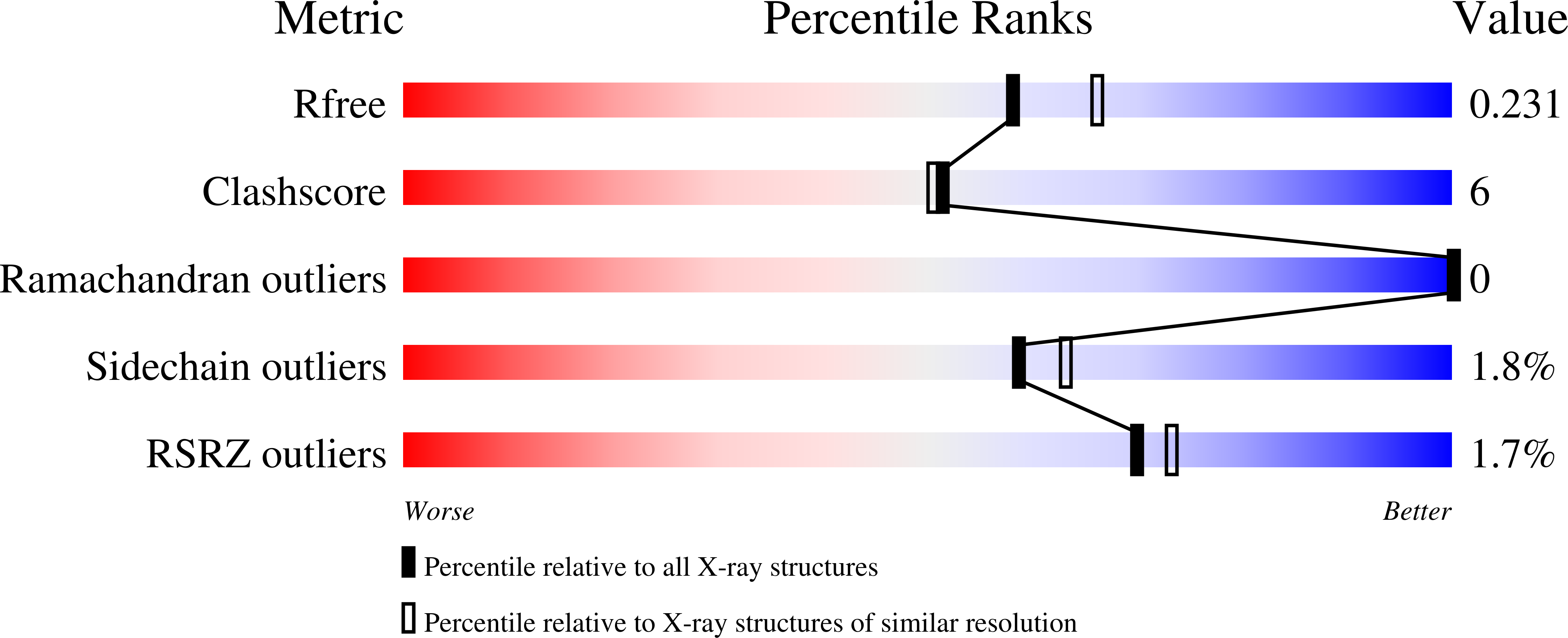Short-peptide fusion inhibitors with high potency against wild-type and enfuvirtide-resistant HIV-1
Chong, H.H., Yao, X., Qiu, Z., Sun, J., Zhang, M., Waltersperger, S., Wang, M.T., Liu, S.-L., Cui, S., He, Y.X.(2013) FASEB J 27: 1203-1213
- PubMed: 23233535
- DOI: https://doi.org/10.1096/fj.12-222547
- Primary Citation of Related Structures:
3VU5, 3VU6 - PubMed Abstract:
Peptides derived from the C-terminal heptad repeat (C peptides) of HIV-1 gp41 are potent inhibitors against virus entry. However, development of a short C peptide possessing high anti-HIV potency is considered a daunting challenge. We recently discovered that the residues Met626 and Thr627 preceding the pocket-binding domain of the C peptide adopt a unique M-T hook structure that is crucial for the design of HIV-1 fusion inhibitors. In this study, we first presented a proof-of-concept prototype that the M-T hook residues can dramatically improve the antiviral activity and thermostability of a short C peptide. We then generated a 24-mer peptide termed MT-SC22EK by incorporating the M-T hook structure to the N terminus of the poorly active short C peptide SC22EK. Amazingly, MT-SC22EK inhibited HIV-1-mediated cell fusion and infection at a level comparable to C34, T1249, SC29EK, and sifuvirtide, and it was highly active against diverse HIV-1 subtypes and variants, including those T20 (enfuvirtide) and SC29EK-resistant viruses. The high-resolution crystal structure of MT-SC22EK reveals the N-terminal M-T hook conformation folded by incorporated Met626 and Thr627 and identifies the C-terminal boundary critical for the anti-HIV activity. Collectively, our studies provide new insights into the mechanisms of HIV-1 fusion and its inhibition.
Organizational Affiliation:
Chinese Academy of Medical Sciences, 9 Dong Dan San Tiao, Beijing 100730, China.



















